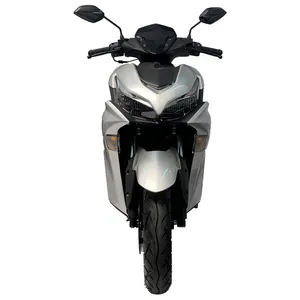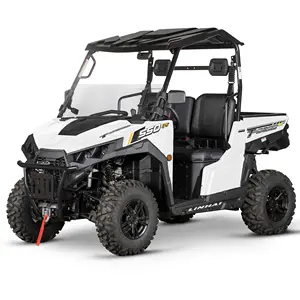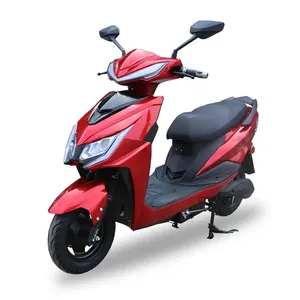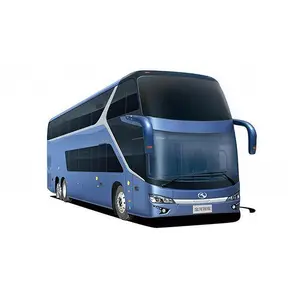Phổ biến trong ngành của bạn






Jensan Tùy Chỉnh 18kN 45MM Chiều Rộng Bên Trong Điều Chỉnh Webbing Mùa Xuân Khóa Để Bảo Vệ Mùa Thu
0,54 US$ - 0,68 US$
Đơn hàng tối thiểu: 10 Cái







Tùy Chỉnh Màu Sắc Có Thể Thu Vào Cuộn Dây Công Cụ Dây Buộc Cho Thuyền Chèo Cần Câu Mồi Mồi Kéo Với Carabiner Khóa Snap Móc
1,20 US$ - 5,60 US$
Đơn hàng tối thiểu: 500 Cái
Vận chuyển mỗi chiếc: 0,36 US$







Hàng Rào Dây Thừng Xoắn Hàng Rào Kiểm Soát Đám Đông Hành Lang Khách Sạn Bộ Hàng Rào Cột Trụ Cho Bữa Tiệc Dây Cột Trụ Có Móc Cài Mạ Crôm
10,00 US$ - 13,00 US$
Đơn hàng tối thiểu: 50 Cái






Oem ODM biểu tượng tùy chỉnh kim loại hình bầu dục leo núi Carabiner đi bộ đường dài Clip din5299 thép không gỉ Carabiner Vòng mùa xuân Snap hook với khóa
0,70 US$ - 0,90 US$
Đơn hàng tối thiểu: 100 Cái







Nhôm Leo Dây Nylon Lấy Dây An Toàn Loại Mở Grab Fall Arrester
Sẵn sàng vận chuyển
13,21 US$ - 18,88 US$
Đơn hàng tối thiểu: 2 Cái
Vận chuyển mỗi chiếc: 17,13 US$






Chuyên Nghiệp Xây Dựng Bảo Vệ Rock Leo Dây Dây Thừng Tự Khóa Thiết Bị An Toàn Rope Grab Bảo Vệ Fall Arrester
Sẵn sàng vận chuyển
10,80 US$ - 17,30 US$
Đơn hàng tối thiểu: 20 Bộ
Vận chuyển mỗi chiếc: 4,83 US$








Dây Buộc Bắt Giữ Mùa Thu Với Móc Để Bảo Vệ Mùa Thu
Sẵn sàng vận chuyển
11,29 US$ - 14,19 US$
Đơn hàng tối thiểu: 1 Cái
Vận chuyển mỗi chiếc: 16,98 US$







Bảo vệ công việc ngoài trời cao độ lấy dây chống rơi dây an toàn công việc cao độ cao dây tự khóa thiết bị chống rơi
Sẵn sàng vận chuyển
6,31 US$ - 7,00 US$
Đơn hàng tối thiểu: 2 Cái
Vận chuyển mỗi chiếc: 9,93 US$






Dây Bảo Vệ Chống Rơi Leo Núi Cứu Hộ Leo Núi Chất Lượng Cao
5,00 US$ - 8,00 US$
Đơn hàng tối thiểu: 20 Bộ
Các tìm kiếm liên quan:
dây kéo rơi dâyvải chống rơithiết bị chống rơi có thể thu vàodây bảo vệ mùa thudây kéo rơi dâyleo núi mùa thubù cao su hình cầucó thể thu vào kiểu thu vàokhông khí giảm xóc bù tự động mứcthiết bị chống rơi an toànnhà cung cấp thiết bị chống rơibắt giữ mùa thu có thể thu vàothiết bị chống tia lửa xe nângsrj11h điện thoại tăng arresterthiết bị chống rj45 mạng






Vàng Bảo Vệ Mùa Thu Nhôm Mở-Loại Sợi Dây An Toàn Lấy
Sẵn sàng vận chuyển
14,50 US$ - 15,50 US$
Đơn hàng tối thiểu: 2 Cái
Vận chuyển mỗi chiếc: 11,49 US$







Bảo vệ công việc ngoài trời cao độ lấy dây chống rơi dây an toàn công việc cao độ cao dây tự khóa thiết bị chống rơi
Sẵn sàng vận chuyển
6,31 US$ - 7,00 US$
Đơn hàng tối thiểu: 2 Cái
Vận chuyển mỗi chiếc: 9,93 US$






Tùy Chỉnh An Toàn Dây Lấy Bảo Vệ Độ Cao Phanh Tự Khóa Thiết Bị Dây Thép Dây Gốc Mùa Thu Arrester Cho Leo Núi Đá
5,55 US$ - 8,88 US$
Đơn hàng tối thiểu: 20 Bộ








Thiết Bị Chống Rơi 7075 Thiết Bị Chống Rơi Kẹp Dây An Toàn Bằng Nhôm
Sẵn sàng vận chuyển
8,00 US$ - 12,00 US$
Đơn hàng tối thiểu: 1 Cái
Vận chuyển mỗi chiếc: 8,68 US$












XINDA Professional Rope Grab Fall Arrester Để Chống Ngã
Sẵn sàng vận chuyển
9,52 US$ - 10,25 US$
Đơn hàng tối thiểu: 1 Cái
Vận chuyển mỗi chiếc: 16,98 US$






Thiết Bị An Toàn Bảo Vệ Dây Cứu Sinh Tự Rút 3-50M Thiết Bị Chống Rơi Có Thể Thu Vào Dây Cứu Sinh
19,90 US$ - 36,90 US$
Đơn hàng tối thiểu: 1 Cái










Thiết Bị An Toàn Bảo Vệ Dây Tự Động Lấy Sản Phẩm Bảo Mật Dây Lấy Leo Trèo Chống Sét
19,99 US$ - 28,75 US$
Đơn hàng tối thiểu: 1 Cái






An Toàn Retractable Wire Rope Fall Arrester/Rope Grab Fall Arrester/Chống Rơi Thiết Bị
20,00 US$
Đơn hàng tối thiểu: 10 Bộ






Chống rơi dây thép không gỉ Dây lấy leo núi mùa thu arrester
33,00 US$ - 35,00 US$
Đơn hàng tối thiểu: 1 Đơn vị
Vận chuyển mỗi chiếc: 15,73 US$





Mở Loại Nhôm Nylon Rope Grab Điện Thoại Di Động Rơi Arrester
15,33 US$ - 18,87 US$
Đơn hàng tối thiểu: 50 Cái






An toàn dây lấy độ cao cao phanh tự khóa Thiết bị dây thép dây gốc mùa thu arrester cho leo núi đá
7,50 US$ - 9,50 US$
Đơn hàng tối thiểu: 2 Cái
Vận chuyển mỗi chiếc: 5,72 US$





Dây Bảo Vệ Chống Rơi 3M 5M 20M Dây An Toàn Chống Rơi Móc Leo Núi Leo Núi Dây Chống Rơi
10,00 US$ - 15,00 US$
Đơn hàng tối thiểu: 2 Cái
Vận chuyển mỗi chiếc: 500,00 US$






Dây An Toàn Dây Webbing Leo Tự Rút Lại Dây Grab Dây Dây An Toàn Thu Vào Fall Arrester
42,00 US$ - 43,00 US$
Đơn hàng tối thiểu: 2 Cái






Mùa Thu arrester Dây lấy ngoài trời leo núi đá không gỉ nhôm Dây lấy mùa thu arrester
8,00 US$ - 10,00 US$
Đơn hàng tối thiểu: 100 Cái






Dây thép lấy dây lấy mùa thu arrester để bảo vệ đầy đủ
7,38 US$ - 7,55 US$
Đơn hàng tối thiểu: 1000 Cái
Vận chuyển mỗi chiếc: 29,80 US$






20% OFF 2m3 3m3 5m3 10m3 Dây lấy mùa thu arrester từ nhà sản xuất chuyên nghiệp
1.000,00 US$ - 10.000,00 US$
Đơn hàng tối thiểu: 1 Bộ

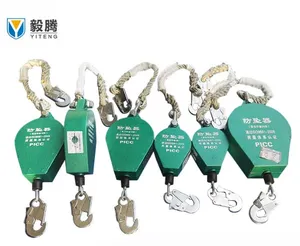




3M 5m 20M gốc bảo vệ descender mùa thu phòng chống dây an toàn mùa thu Carabiner leo dây an toàn lấy mùa thu arrester
1,00 US$ - 3,00 US$
Đơn hàng tối thiểu: 2 Cái





Chất lượng cao trên không làm việc leo cứu hộ mùa thu bảo vệ dây lấy mùa thu arrester
11,60 US$ - 13,00 US$
Đơn hàng tối thiểu: 10 Cái
Vận chuyển mỗi chiếc: 3,84 US$





XYL Dụng Cụ Kẹp Dây Leo Núi Cứu Hộ Bằng Nhôm Giá Rẻ Thiết Bị Chống Rơi Bán
Sẵn sàng vận chuyển
8,30 US$ - 11,00 US$
Đơn hàng tối thiểu: 2 Cái
Vận chuyển mỗi chiếc: 3,55 US$






Tùy Chỉnh An Toàn Dây Lấy Độ Cao Cao Phanh Tự Khóa Thiết Bị Dây Thép Dây Gốc Mùa Thu Arrester Cho Leo Núi Đá
7,46 US$ - 9,55 US$
Đơn hàng tối thiểu: 10 Bộ






Dây lấy mùa thu bảo vệ Webbing mùa thu arrester với năng lượng hấp thụ
205,00 US$ - 240,00 US$
Đơn hàng tối thiểu: 5 Cái






An toàn có thể thu vào dây thừng mùa thu arrester/Rope lấy mùa thu arrester/Chống rơi thiết bị
29,90 US$ - 39,90 US$
Đơn hàng tối thiểu: 10 Cái
Vận chuyển mỗi chiếc: 12,87 US$






Giá Tốt Nhất Rơi Bắt Giữ Hệ Thống Rope Grab Fall Arrester
15,00 US$ - 25,00 US$
Đơn hàng tối thiểu: 1 Bộ

Các danh mục hàng đầu
Giới thiệu về dây kéo rơi
Alibaba.com cung cấp các sản phẩm 175 dây kéo rơi. Có rất nhiều dây kéo rơi lựa chọn dành cho bạn, chẳng hạn như trắng, đen, và vàng. Bạn cũng có thể chọn từ kim loại, nylon, và polyester dây kéo rơi.
